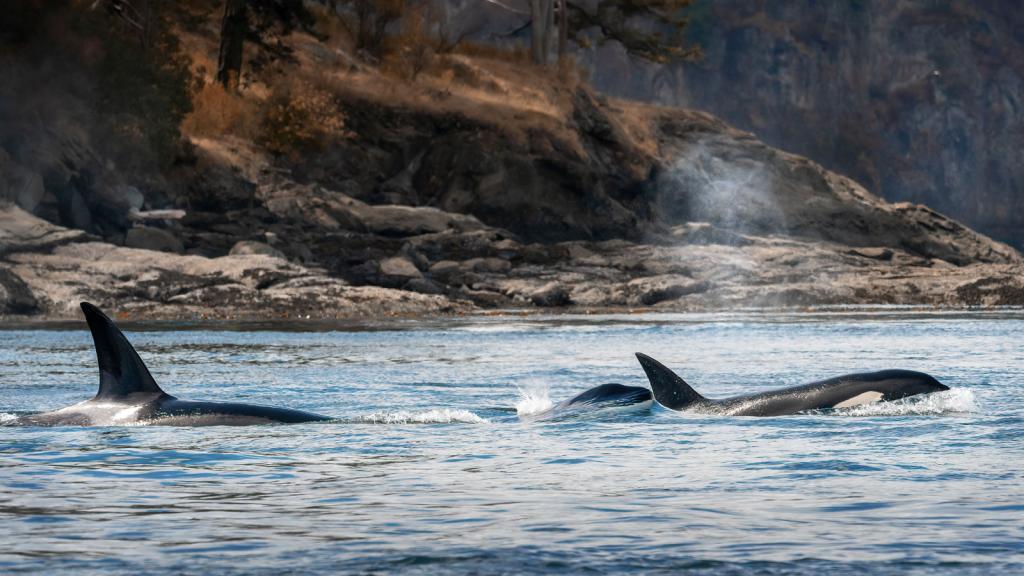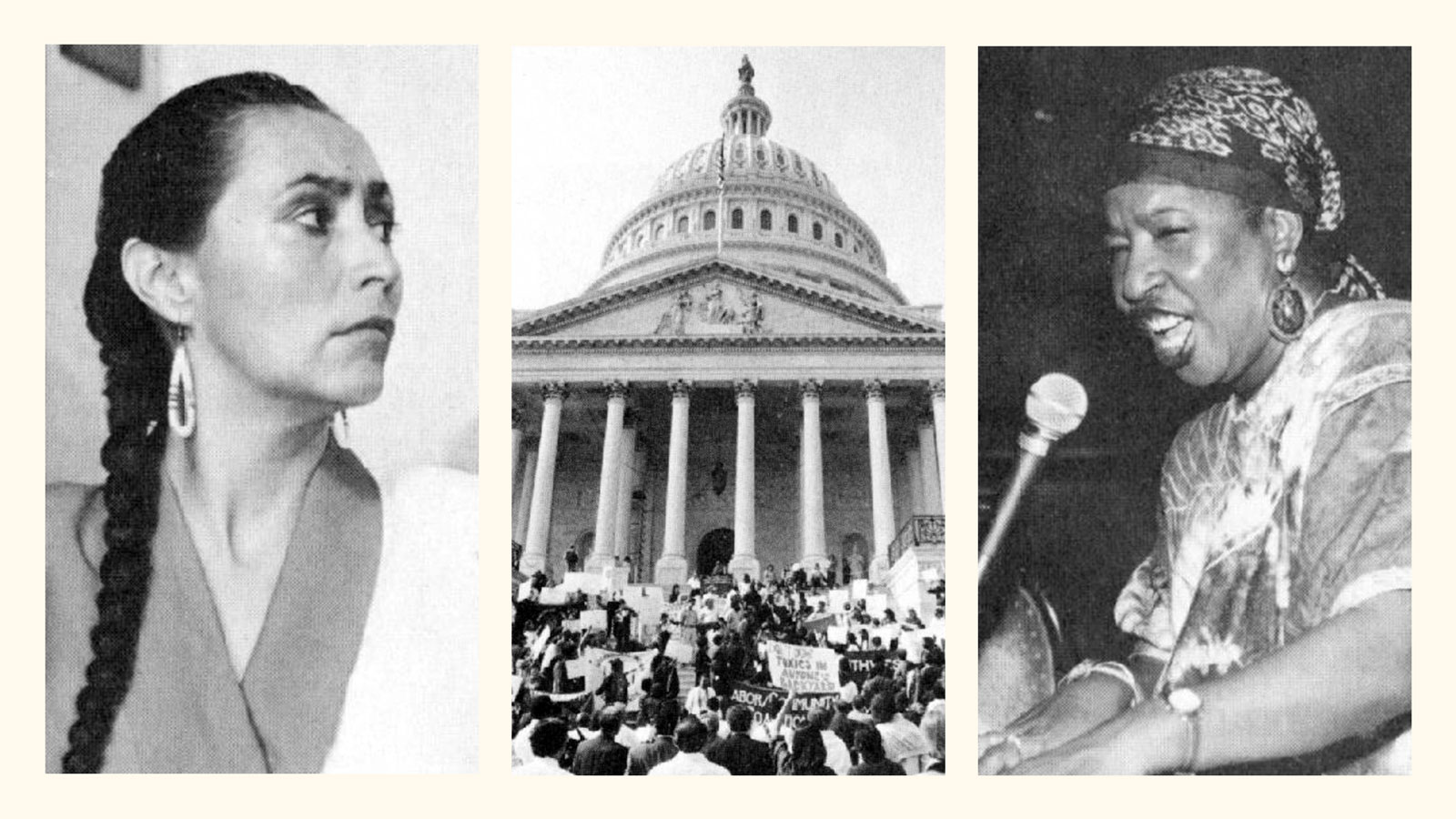Tamara Toles O’Laughlin is a national climate strategist, and the CEO and president of the Environmental Grantmakers Association.
As COP26 gets underway, we don’t know if it will meet our ambitions for action on climate — that’s something we can only determine in retrospect. Organizers have worked hard to make sure that the diversity of our movement is on display, but equity is another matter entirely.
Thirty years ago another meeting had just wrapped up, one that was truly organized for the people by the people: More than 1,100 activists attended the National People of Color Environmental Leadership Summit in Washington, D.C., held over four days in October 1991. The United Church of Christ’s Commission for Racial Justice sponsored the gathering. The planners had no idea that what they were doing would catalyze the birth of the only leadership bodies in the climate movement that are led, shaped, and run by people of color.
I’ve been at this for 20 years, working to get the agendas of Black, Indigenous, people of color, and women into the conversation about climate survival. The leaders who emerged from that meeting in 1991 are my family, my touchstones, and my mentors. As a result of the doors they kicked open, I’ve been able to go the distance — I’m the first African American to run a climate organization, and the first to head the nation’s oldest environmental philanthropic association.
The summit never got its due, but it produced two foundational documents that foreshadowed every challenge we face today: the 17 Principles of Environmental Justice and the Principles of Working Together. Together, these set up a decades-long conversation about who leads, how we fundraise, and what equity means in practice. Among the principles is explicit opposition to military occupation, a mandate for ethical land use, and an affirmation of the right to be free from bodily harm and ecological destruction.
I was thrilled to bring these architects of our multigenerational movement together with younger climate organizers via Zoom last month, in a panel discussion hosted by the Island Press Urban Resilience Project. Joining me were Peggy Shepard of WE ACT for Environmental Justice; Beverly Wright of the Deep South Center for Environmental Justice; Bineshi Albert of the Climate Justice Alliance; Zelalem Adefris of Catalyst Miami; Jerome Foster II of OneMillionOfUs; and Iris Gonzalez of the Coalition for Environment, Equity and Resilience. [Editor’s note: Adefris and Foster are part of the Fix network of emerging leaders and were named to the Grist 50 in 2020.] I’m the middle of the generational seesaw — I see it as my job to connect younger folks to the generation that tried it, did it, and is still here. The conversation was inspiring. Below are some of the highlights.
On uncovering environmental racism
Peggy Shepard: I began working on environmental justice issues in Harlem in 1986. In 1988, WE ACT began developing campaigns around diesel buses, because we housed over one-third of New York City’s bus fleet in uptown neighborhoods. We also fought a sewage treatment plant that was spewing emissions and making people sick. Vernice Miller-Travis, WE ACT’s cofounder, worked on the Toxic Wastes and Race in the United States report with Charles Lee at the United Church of Christ Commission for Racial Justice, and they began developing the concept of a summit.
When I came to the summit as a delegate, it was the first time I really understood that there were hundreds of groups like mine working on similar issues around the country. It was a life-changing event.
Beverly Wright: In 1987 I was a college professor studying teen pregnancy when I met Dr. Robert Bullard at a sociological association meeting in Louisiana. There were just a few of us who were African Americans working at predominantly white schools, fighting racism and trying to get tenure.
Dr. Bullard and his wife had been fighting a landfill in Houston and realized that all the landfills were in Black people’s neighborhoods. He said to me, “If this is happening here, it might be happening in other places.” He enlisted me to help him look at Louisiana, and that’s how we discovered Cancer Alley.
When I came to the summit as a delegate, I had already realized that this problem was huge in the South — in Louisiana, Mississippi, Arkansas, Florida. But I didn’t have contact with people like Peggy in New York. I didn’t think it went past the Mason-Dixon Line. So it was amazing, and frustrating, and sad. Wherever you went, wherever the despised minority was, that’s where you found all of the pollution.
On the legacy of defining environmental justice
Zelalem Adefris: I was born in 1992, but the principles that were created in 1991 I use almost every single day. I use them in coalition-building and to guide my own work. These things stand the test of time. We still have our work to do, but that guidance is so helpful. It still echoes through today and shapes newer activists on the scene.
Shepard: We had a committee of people who began to work night and day on developing the 17 principles. And you’ll see that all of them are just totally relevant today. They’re important values that we all hold dear and an important roadmap for the future.
Iris Gonzalez: From where I sit and stand and lead with others, the principles are a dictionary. They’re the language and the framework for things that I have personally lived but didn’t have language for when I was younger. The solutions come from our own people, from our own community, our own tables. I can’t overemphasize how powerful and important those principles have been.
It’s so important to have the language and all of this work that happened 30 years ago as a foundation and asset base. It’s been about putting all of that into practice and building the kind of relationships where we can speak honestly and openly and not have that blow up the room, but have that transform the room — and transform ourselves as we transform these systems.
On moving away from ‘the environment‘
Bineshi Albert: I wasn’t at the summit, but my then mentor, Jackie Warledo, attended. I remember long phone calls with Jackie and lots of debate about what should be included in the principles. That very first principle, that says the “sacredness of Mother Earth” — versus “the environment” — was a game-changer for engaging with Indigenous communities. It was a culmination of people coming together the year before, in 1990, at the first Protecting Mother Earth Gathering, which spurred what became the Indigenous Environmental Network. The gathering was co-hosted by Diné C.A.R.E. and Greenpeace; they realized they were up against some of the same polluting corporations and started sharing notes with each other.
There was this momentum that was building, connecting Indigenous people with other communities of color. People saw the value of connecting their work and the intersections of not just the environment, but also of racism, of social injustice — and to really think, What does it mean to take on industry, to take on government policy? To take on everything from redistricting to redlining — all of these systems that were set up to facilitate this kind of pollution.
We took this idea of “the environment” that was held by some of the mainstream environmental organizations and showed that people are part of the environment as well. The movement is about protecting the places where we live, work, play, and pray. From an Indigenous context, we’re part of the land; we’re not dominating it. These principles helped define not only what the environment is and how we’re involved in it, but also what it means to engage with other communities who are fighting racial, social, and environmental injustice.
Wright: For me, the summit was also a cultural experience because it introduced me to Asian Pacific Islanders and Native Americans — groups I hadn’t had contact with in large numbers. We had prayer meetings, and I remember telling Tom Goldtooth that Native Americans were the first group I found that had prayers longer than the Baptists or the Pentecostals. When you get to know people of different racial and ethnic backgrounds in an intimate way, you learn to feel their pain. You empathize; you don’t sympathize.
On the summit’s tangible impacts
Shepard: I went back home, and in 1992 we started the Northeast Environmental Justice Network. We had organizers in Boston, Baltimore, New York, and Washington to bring people together, to go to the EPA, to speak at hearings. We met several times a year, and with the Indigenous Environmental Network as well.
We have a statewide coalition that developed more than a dozen pieces of legislation banning certain toxins. We developed the Environmental Justice Leadership Forum on Climate Change, and we held the first climate justice conference at Fordham law school to bring the green groups and the environmental justice community together. We continue to work now with the White House Environmental Justice Advisory Council, which Jerome and Beverly are also part of, making recommendations at the federal level.
Today, there are environmental justice advisors working for cities and states. You can major in environmental justice at the University of Michigan and other colleges. There are hundreds of books. There is the Office of Environmental Justice at the EPA. That is the work that the movement has made happen.
Jerome Foster: The history and the legacy of this conference is woven into the fabric of the youth climate movement; it is just foundational in how we operate. Even though a lot of young people today may not understand where that legacy comes from, it was the architects right here in this conversation — Peggy Shepard and Dr. Wright — who ushered in the understanding of what climate justice actually means.
Some people say, “Oh, the past is just full of inaction.” No, it’s not full of inaction. It’s full of unheard people. … We just have to use that legacy and that knowledge and put that into practice.
The views expressed here reflect those of the authors.
Fix is committed to publishing a diversity of voices, and we want to hear from you. Got a bold idea, fresh perspective, or insightful news analysis? Send a draft, along with a note about who you are, to opinions@grist.org.



